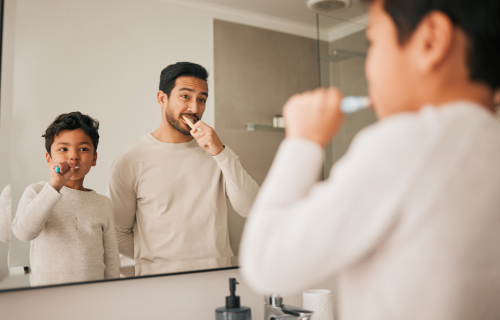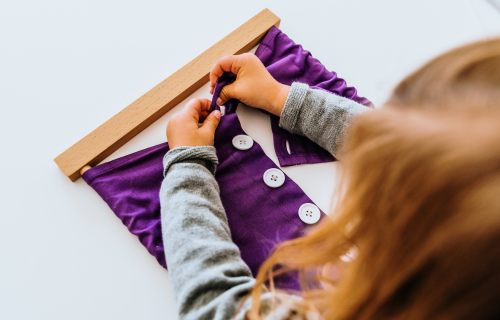Who was Montessori?
Maria Montessori was a woman born in Rome in 1870. She was the first female to graduate in medicine from Rome University. She worked as the director of a special school called Scuola Magistrale Ortofrenica, which catered to children with special educational needs.
In 1900, she began teaching Pedagogical Anthropology at Rome University.
In 1907, Montessori opened the first Casa dei Bambini, a school for children from disadvantaged backgrounds. It was here that she developed her famous teaching method, which gained international recognition.
One of her groundbreaking ideas was the importance of creating a child-centered environment for effective learning.
Montessori believed in observing children closely to understand their needs. She identified five universal needs for effective learning:
- Joy in learning
- Love of order
- The need to be independent
- The need to be respected and listened to
- Interest in fact and fiction
She insisted that these needs were applicable to all children, regardless of nationality, gender, race, or background. Even more than 50 years after Montessori's death in 1952, these needs are still relevant today.
Montessori Activities for Parent and Child : Life Skills
In this section, your child will learn important skills for life. Some of these tasks might seem easy for adults, but they become automatic with practice. Your child will feel proud and capable when they can do these things on their own.
First, there are simple activities like washing hands and brushing hair. Then, there are tasks like putting on shoes and learning to pour, which also help your child coordinate their hands and eyes.
1. Washing Hands
Washing and drying your hands is a basic and important skill. Surprisingly, some kids begin school without knowing how to do it. Think about how great your child will feel if she can wash her hands on her own.
Using a sink might be a bit hard for a child in the beginning, so you can start by using a bowl of water.
When to wash handsWhen your child has mastered washing her hands, explain why and when we need to wash our hands. After using the toilet, before meals, and before cooking, remind your child to wash her hands, until she remembers for herself. Remember to lead by example!
2. Brushing Teeth
It's really important to learn a good habit when you're young, and one of the most important habits is taking care of your teeth. Your dentist can be a great help in teaching your child why and when we should clean our teeth.
Here's why brushing your teeth is important: we need to do it after meals and before bedtime. And it's also important not to share toothbrushes and towels with others.
Your dentist can explain all of this to your child and make sure they understand why it's so crucial to keep your teeth clean.
3. Folding clothes
Start by folding handkerchiefs, which is easy. Then, move on to folding clothes. When picking clothes for your child to fold, choose ones with seams that can help as a guide, like shirts or sweaters.
Take a moment to explain why folding clothes is important. Also, show them where the folded clothes should be kept. You can make it fun by putting pictures of clothes on different drawers as a reminder. This way, it becomes a helpful and organized activity!
4. Buttoning a shirt
Learning to button a shirt might seem hard, but you can make it easy by breaking it into simple steps for your child. Kids often struggle with making sure the ends of the shirt line up so the buttons match the buttonholes.
To make it easier, teach them to practice on a table first, then button from the bottom to the top. This helps your child learn to match the bottom button with the bottom hole when they button up their shirt while wearing it.
Practice with other clothes. Open and close each garment before fastening, and work from bottom to
top. Move onto items with smaller buttons.
Choose a large item, such as an adult shirt or cardigan, and teach your child to button while wearing
the item. Try items with snaps and fastenings.
Make each movement clear, and follow the same procedure for buttons. When your child has mastered
putting on a shirt or cardigan, help her to learn how to put on a sweater.
Choose your own method, but be consistent each time you help. Check that your child is confident putting on mittens or gloves and other items of clothing.
Fastening a zipperChildren find zippering interesting, but very tricky. You may need to hold the bottom of a zipper while they do the zippering action.
- Pants and skirts: Do up the top button, and then do the zipper.
- Dresses: Hold the bottom of the zipper before zippering.
- Jacket: Put the left end of the zipper into the bottom section and hold securely with the left hand while zippering up with the right hand. If your child is left-handed, this might be tricky at first, so allow plenty of time to practice.
5. Putting on shoes
If your child is struggling to put on shoes, here's a simple way to help:
Practice Without Wearing Them
- Show your child how to put on shoes when they're not wearing them. Demonstrate the steps, like opening and adjusting, so they understand.
Start with Easy Fastenings
- Tying shoelaces can be tricky for young kids. Begin with shoes that have Velcro or other easy fastenings. This helps build your child's confidence.
Master Velcro and Fastenings
- Once your child feels comfortable with Velcro and other fastenings, have them practice turning the shoes around with the heels facing them.
Try Putting Shoes On
- After mastering the basics, encourage your child to put on the shoes while wearing them. This gradual approach helps them gain confidence in the process.
Remember, patience is key, and celebrate their progress to boost their confidence even more!
Learning left and right shoesBefore a child starts to fasten his shoes, he needs to identify which goes on which foot. Here are some pointers to help him work it out:
- Hold Velcroed shoes by the straps. The straps should touch back-to-back in the middle.
- Buckled shoes should have buckles on the outside, and not in the middle.
- Write R and L inside rubber boots.
- Save laced shoes until your child is confident with right and left, and dextrous with other fastenings.
6. Learning to pour
Think about how often you pour things throughout the day. It might seem easy for adults, but for kids, learning to pour is a bit challenging. They need to concentrate and coordinate their hands and eyes.
A fun way to help your child get better at this is to practice pouring beans from one big plastic container to another. Once they feel comfortable with that, you can try the same activity with other things.
Replace the beans with finer substances, such as rice or sand. Try the same activity using water colored with a few drops of food coloring. (You will need a cloth to wipe up any spills.)
Instead of pouring from pitcher to pitcher, try pouring from a pitcher into cups. Buy a play teaset and add beans, water, etc. Give your child a pitcher half-filled with water and let her pour the water into glasses for the dinner table.
7. Learning to use clothespins
This is a really easy way to help a child get better at using their muscles together. Even the youngest kids can do it.
First, they can practice with regular-sized clothespins. Once they're good at that, they can try using smaller toy clothespins. If you just got new regular clothespins, use them a few times to make them easier to squeeze.
The next time that you are putting out some laundry, give your child some small items of clothing to hang up with clothespins.
8. Opening and closing objects
When I was a kid, I loved playing with a small toy safe that had a special code only I knew. Now, I see some children are curios about how things open and close.
It could be the twist of a jam jar lid or the turn of a key in a lock. To satisfy this curiosity, we start by opening jars and bottles. Later, we move on to nuts and bolts, refining the turning motion.
If you want to try this with your child, use various bottles and jars of different sizes. This way, your child can easily see and understand the differences in openings and lids.
Introduce assorted padlocks and keys, and explain what they are used for. Children are fascinated by keys, but you need to explain the dangers of locking someone in a room, including themselves.
9. Cutting with scissors
Cutting a strip of paper in half might seem easy for most kids, but cutting with precision is a bit trickier. This activity helps children practice cutting along a straight line marked on the paper.
They learn to use the scissors carefully and move the paper as they cut. As they get better, the activity introduces more challenging lines to cut, and eventually, they practice cutting in different directions by moving both the scissors and the paper.
From cutting straight lines your child can progress to wavy lines and zigzags. Provide templates to cut out – for example, animals or cars.
Make paper chains. Fold a strip of paper in an accordion fold; draw a person, making sure that the hands and feet are touching the folds. Ask your child to cut out the figure, but not the hands and feet. When she has finished, open the paper to reveal the linked people.
How to handle scissorsBefore learning to cut, children need to learn how to handle scissors safely. Teach your child that when carrying scissors, the scissors need to be held with the whole hand wrapped around the closed blades. Show how to pass the scissors with the handle facing the person.
Safety Point! All activities involving scissors need to be supervised closely and the dangers of misusing scissors need to be explained. If your child uses scissors inappropriately, remove them and reintroduce the activity at a later date.
Conclusions
To sum up our look at the Montessori Teaching Method and its life skills activities, it's clear that these tips are really helpful for parents who want to help their kids become more independent and coordinated.
While it would be nice to explore the philosophy behind Montessori education more deeply, these activities are still a great hands-on guide for parents who want to use the Montessori approach with their kids. Enjoy teaching and learning!



















Banyak kebaikannya
BalasPadamnama orang rupanya montessori ni
BalasPadamTerima kasih kerana singgah ke Blog Sii Nurul. Jika ada sebarang pertanyaan, komen, penambahbaikan, cadangan mahupun pandangan. Boleh tinggalkan jejak anda.